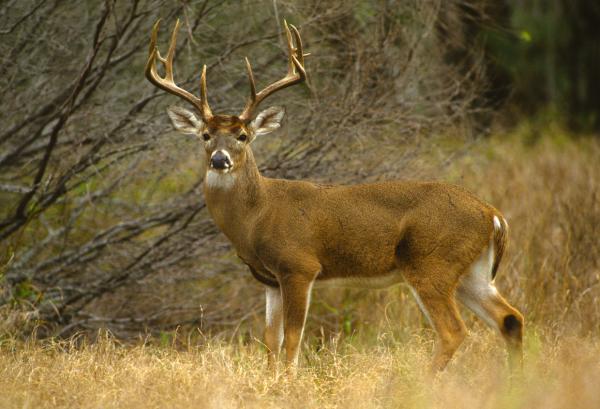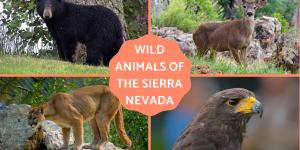What is the Habitat of the White-Tailed Deer?


White-tailed deer, known scientifically as Odocoileus virginianus, are an American type of deer that inhabits all sorts of different environments, from shrublands to forests, grasslands, wooded plains and even desert areas.
These deer can adapt to different diets, as they can browse and forage on many kinds of shrubs, trees, vines, forbs, grasses, foliage and fungi. Wherever they go, white-tailed deer search for food, shelter and camouflage: they need large areas with appropriate plants to ensure a viable population.
Do you want to know more about what is the habitat of the white-tailed deer, how it relates to its environment and where in America do they live? Stay with us at AnimalWised and read on!
What do white-tailed need in their habitat?
Plant diversity is an key part of a deer's habitat. White-tailed deer require numerous plants to meet specific nutritional needs throughout the year; many plants are used just during a season or part of it, and each plant is eaten in the right proportion to meet the nutritional requirements of the deer.
Moreover, certain plants serve to conceal and cover the deer. Annual food, nutritious diet, and excellent cover are the requirements of the perfect habitat for the white-tailed deer. Productive, rich soils generate high-quality food and are more efficient for generating resources. These soils can support as many as 2 to 4 times the population an upland area can.
A white-tailed deer's diet
An important aspect of the white-tailed deer's habitat is the presence of woody plants and forbs to eat from, as deer are ruminant herbivores. Forbs are soft-stemmed, broad-leaved flowering plants such as clover or milkweed. These plants are rich in nutrients and more digestible than grasses: various studies show that forbs comprise the majority of spring and summer diets for the white-tailed deer.
On the other hand, woody plants were the main type of food in their fall and winter diets. Certain parts of tender grass-rich habitats are also preferred by white-tailed deer.

What kinds of habitat do white-tailed deer inhabit?
White-tailed deer can adapt to many different habitats and climates, although they prefer temperate deciduous forests and prairies, where they can found oak, maple, poplar, birch and aspen trees, sumac shrubs, Osage orange trees and poison ivy. They prefer open woodlands, but they can also be found in farmlands and even urban areas. In the summer, they inhabit the fields and meadows with coniferous trees for shade.
They also inhabit tropical and subtropical regions, including wetland swamps, because the longer periods of rainfall and duration of the growing season provides annual forb availability and cover in broadleaf forests.
White-tailed deer can also be found in drier regions, including along the streams and rivers of savanna woodlands, grasslands, shrublands, chaparral forests and even mountains.
Where do white-tailed deer live in America?
White-tailed deer are native to the Americas. They are found throughout the United States; they are so prevalent in that country that they are the animal emblem of many states. However, they are not usually found west of the Rocky Mountains, where the mule deer is more widespread.
They also live in the central and southern areas of Canada, where they reach almost as far west as Alaska. The range of these deer also spreads throughout Central America, reaching as far south as Bolivia.

Threats to the white-tailed deer's habitat
Regardless of their habitat, white-tailed deer are not always safe. Their natural predators include bobcats, coyotes, cougars and wolves. Of course, white-tailed deer can also perish as the consequence of parasites or other diseases, but they are also threatened by human encroachment and hunters.
Now that you know what is the habitat of the white-tailed deer, don't miss the following articles!
If you want to read similar articles to What is the Habitat of the White-Tailed Deer?, we recommend you visit our Facts about the animal kingdom category.







